Xôi Ngũ Sắc: Basic Information
Pronunciation
Alternative Name(s)
Dish Type
Course
Mealtime
Popular Variations
Xôi Ngũ Sắc: Ingredients and Preparation
Main Ingredients
Main Cooking Method
Preparation Process
Xôi Ngũ Sắc: A Deep Dive
Cultural Significance
Taste
Texture
Aroma
Color
Serving Style
Serving Temperature
Accompaniment
Occasions
Seasons
Special Diets
Calories
Popularity
Popular Similar Dishes
- Xôi Gấc
- Xôi Lá Cẩm
- Xôi Lá Dứa
Popular Dining Area
Xôi ngũ sắc is a traditional sticky rice dish from Vietnam featuring a combination of five colors. This colorful glutinous specialty is a street food specialty of the Thai ethnic people in Muong Lo of Yen Bai. Typically, the sticky rice comes in red, green, white, yellow, and purple (or black) colors.
Furthermore, these colors also represent natural elements from the table of five elements in Eastern philosophy, with green for wood, red for fire, yellow for earth, black for water, and white for metal. Interestingly, these five colors are all naturally achieved using plant-based products.
Usually, the yellow is made using turmeric, while the purple or black hue comes from the magenta leaves. For the red sticky rice, gac fruit is the common option, while the green one is achieved using pandan leaves.
During the cooking process, each color of the sticky rice is kept separately. However, people often mix all the colors when serving it. In Northern regions, xôi ngũ sắc is often served during the New Year occasion and festive events.
Uncover other aspects of xôi ngũ sắc, like its accompanying food items, along with the benefits and drawbacks of eating this sticky rice treat.
Additionally, you should know about what others think about xôi ngũ sắc through common concerns. Then, learn about the dishes that are like xôi ngũ sắc.
Key Points
Xôi Ngũ Sắc Images
Pros and Cons of Eating Xôi Ngũ Sắc
These are a few features that affect your consideration of whether to consume xôi ngũ sắc or not:
Pros
Cons
Afterward, make sure to explore some of the common concerns relating to xôi ngũ sắc to have a thorough understanding of the treat.



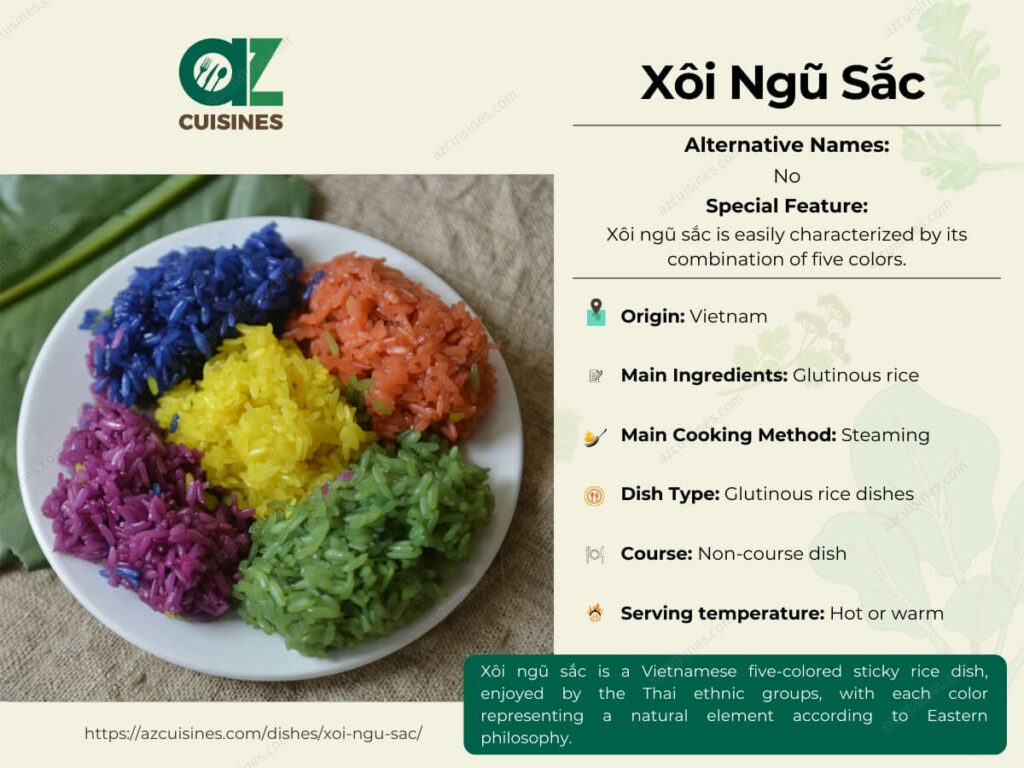
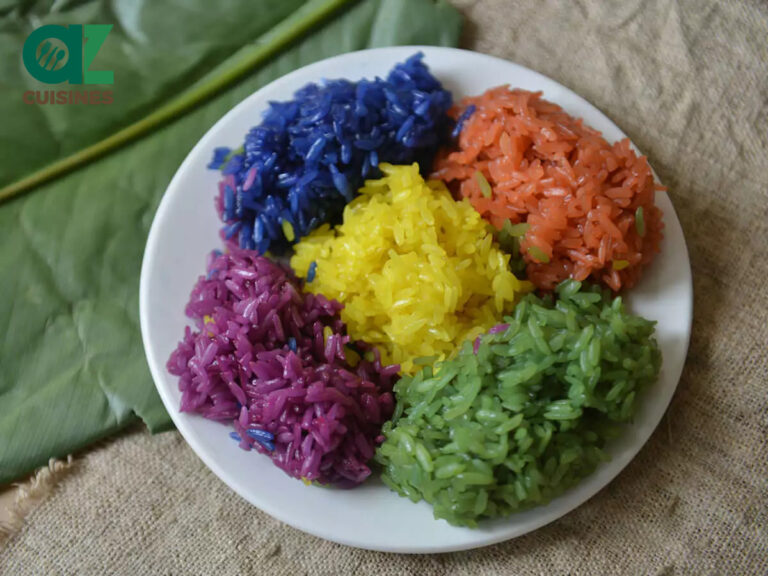
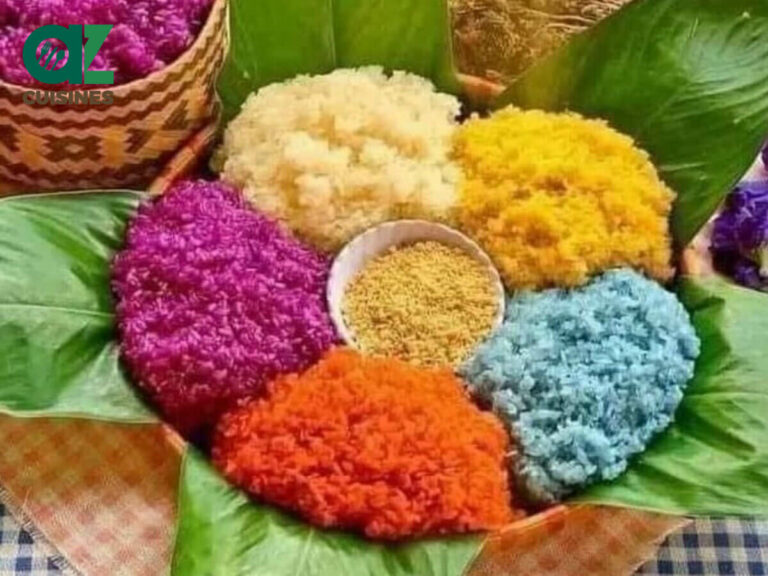
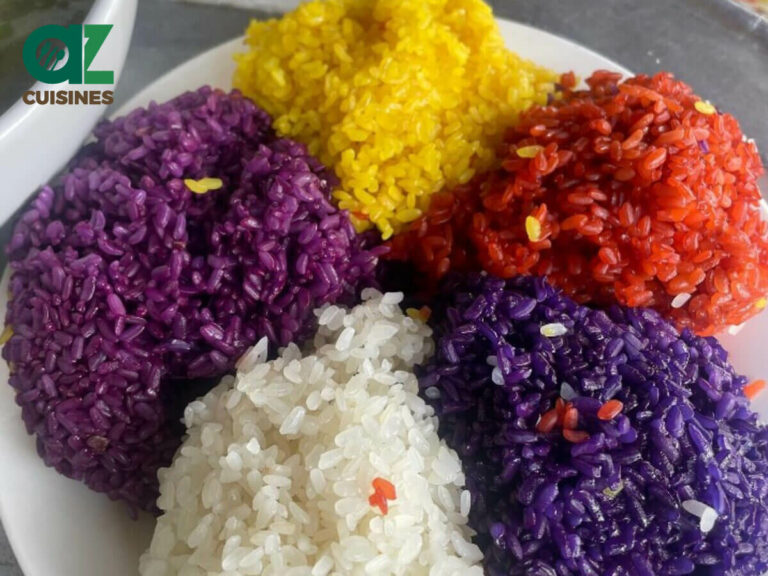

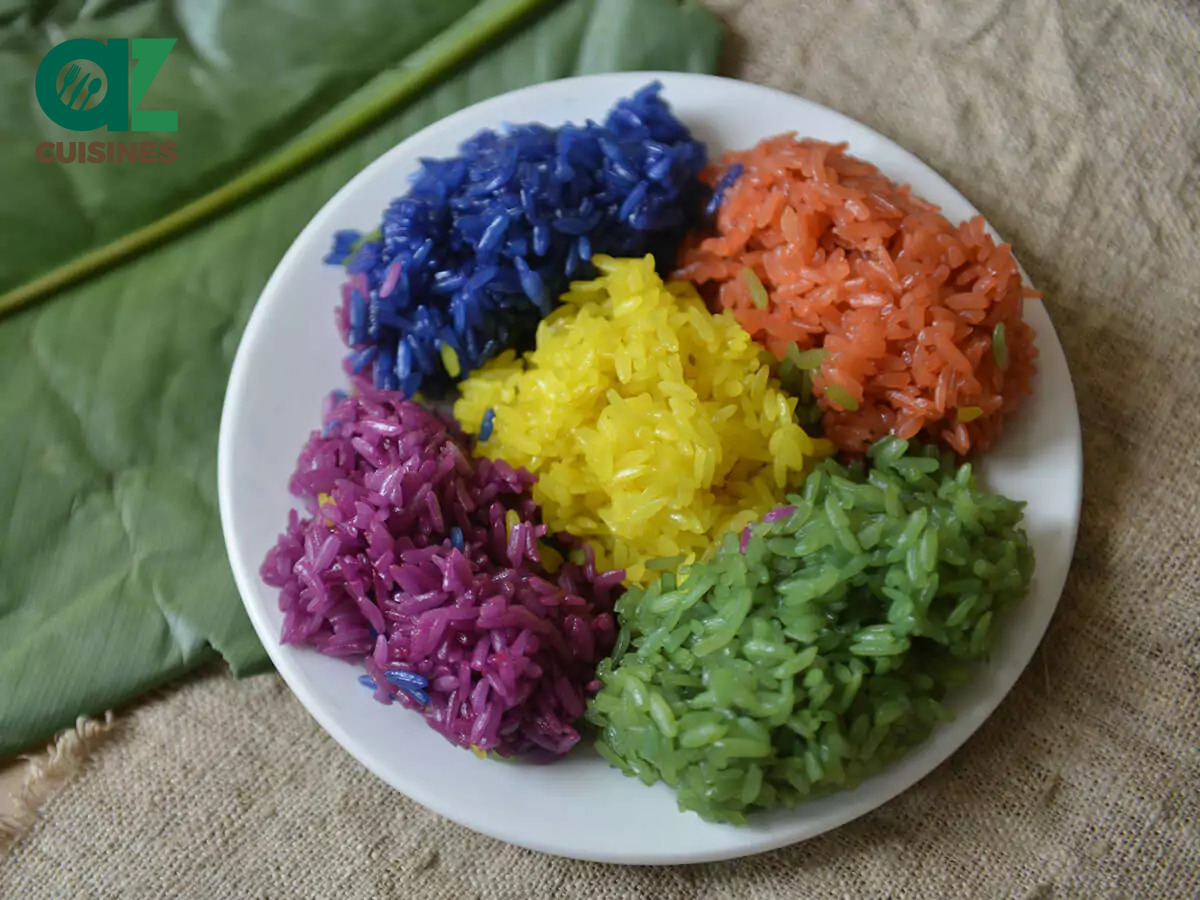

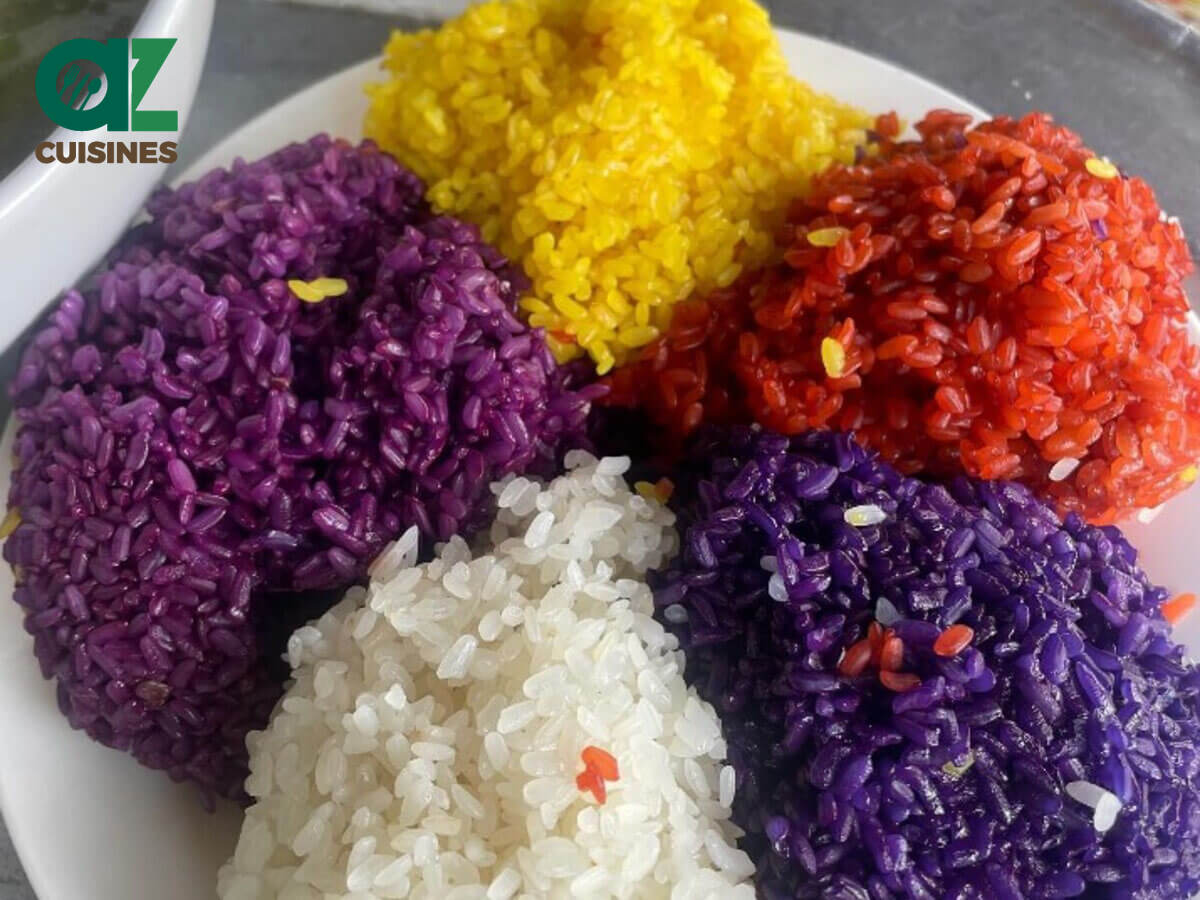
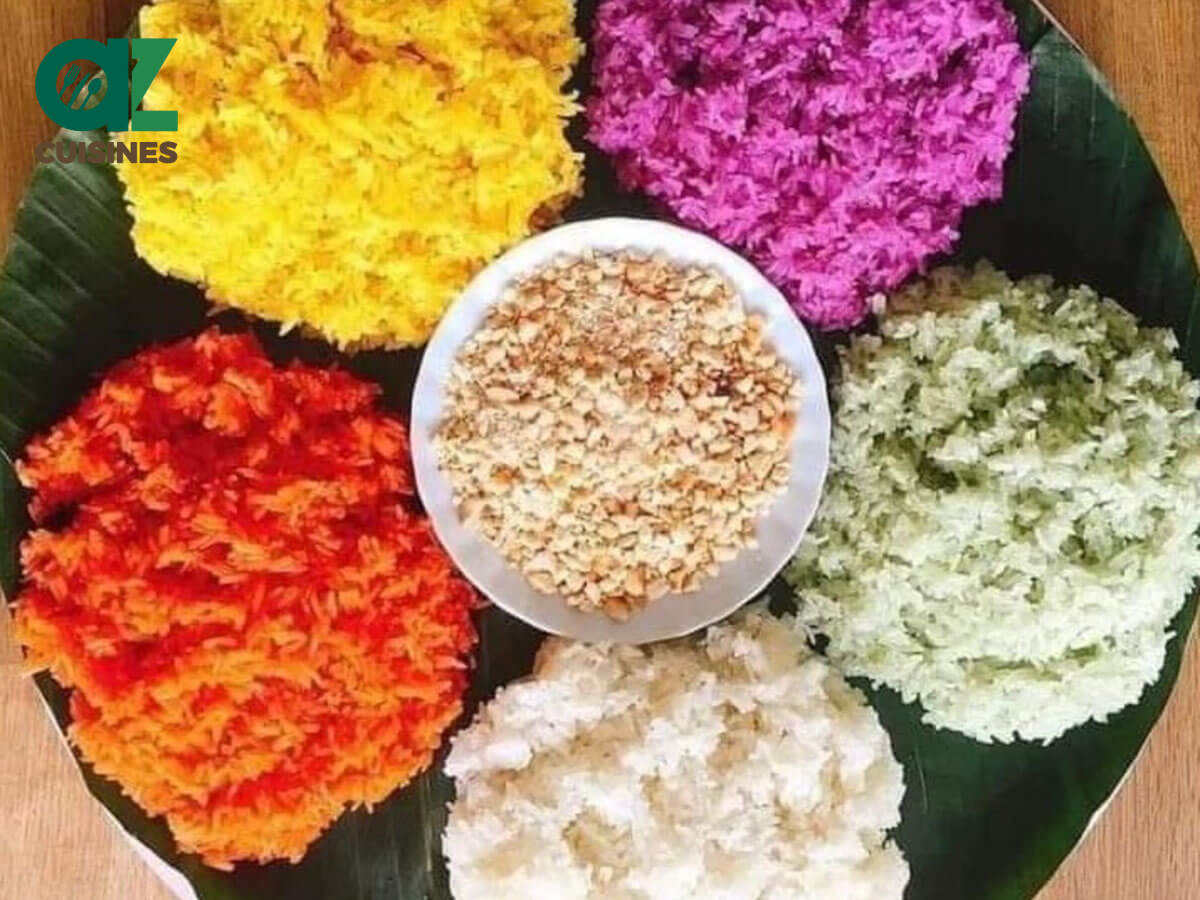
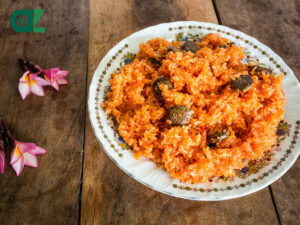
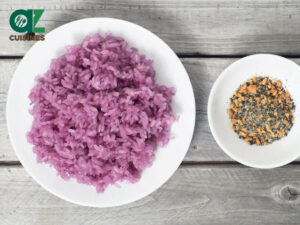
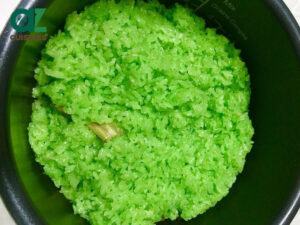
Truc Tran (Kris)
Senior Food Editor
Expertise
Home Cooking, Meal Planning, Recipe Development, Baking and Pastry, Food Editor, Cooking-video Maker, Vietnamese Food Evaluation Expert
Education
Truc Tran (Kris), an experienced food writer and editor, is great at exploring and describing global cuisines, from simple street food to fancy dining. In her writing, she skillfully mixes different flavors, cooking methods, and culinary traditions, showing the unique character of various cultures through their food and drinks. On azcuisines.com, Kris highlights her knowledge, especially in Asian cuisine and worldwide traditional dishes.